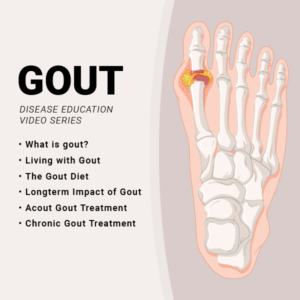
There are four main types of gout. The first two are acute and are often accompanied by pain. They are caused by an accumulation of calcium crystals in specific joints, usually the big toe joint, and the last two are chronic. The symptoms of gout vary among patients, so it’s important to know the type you have to avoid. Here’s a look at each type of gout. Read on to learn more.
Symptoms of gout include intense pain in a particular joint, usually the big toe. However, it can also affect other joints. A gout attack is sudden and excruciating, and the painful inflammation typically goes away after a few days of treatment. The most common symptoms of gout include swelling, redness, heat, and stiffness. If you suffer from gout, it is important to seek medical attention as soon as possible.
A study of seven loci in gout revealed that rs3775948 of the ABCG2 gene was associated with gout risk. The rs6648157 variant of SHLD2/FAM35A was related to urate clearance. This SNP also was related to CDC42BPG, which has no known role in the development of gout. It may also be linked to other genetic loci.
Researchers have discovered a gene that links the ROL type of gout with the inflammatory condition. The rs4148155 of ABCG2 and rs11066008 of the ACAD10 (ALDH2) gene were associated with the ROL type of gout. Although the study was based on a small number of studies, it provided a good overview of gout and its associated symptoms.
Some GWAS have identified loci that are related to the onset of gout. The rs11066008 of the ABCG2 gene has been associated with gout. Other rs11066008 of ALDH2 and GLUD1 were not found to be associated with gout, but they were significant. Further analysis of the ROL type has indicated that rs3775948 is the most likely candidate locus.
Although there are seven GWAS loci for gout, only three are associated with gout. These loci are associated with a number of genes. rs11231879 of the SLC22A11 gene has the strongest association with gout. Also important are rs11231879 and SLC2A9 of the ABCG2 gene. Other three GWAS associated with gout

A recent GWAS meta-analysis showed that SNPs at five loci are associated with the risk allele of the SLC2A9 gene. These SNPs are also associated with uric acid levels and urinary excretion. Moreover, the rs3875682 variant of the SLC22A11 gene has been associated with the risk of developing gout. It is the most common genetic factor for gout.
The two types of gout are genetically similar, but there are differences between them. The asymptomatic type of gout is more common in the endoskeletal joints of the body, where the temperature is lower. These joints are also more likely to suffer from gout. When asymptomatic, a symptomatic gout attack may present as a white lump under the skin. The presence of urate crystals in other types of gwat is irrelevant.
There are three types of gout. The combined type is the most common. Another type affects both the legs and arms. In primary gout, tophi are hard deposits of uric acid in the joints. They are usually caused by a genetic disorder, but they can also be hereditary. Auricular tophi are found in the joints of overweight people. They are the most common symptom of gout.
The levels of otic and uric acid are high in people with both types of gout. The level of urate in the limbs and joints is high. These two types of gout are considered different if the symptoms appear in two different parts of the body. In addition, there are two types of ear gout: chronic type – a form of uric acid in the joints of the legs.
Hyperuricemia is one of the two main types of gout. In patients with primary gout, the disease is inherited and is characterized by the accumulation of uric acid in the blood. Patients with secondary gout have symptoms due to various treatments or medications. Certain types of gout are triggered by certain food groups, resulting in a reduction in the symptoms of a gout attack. Site medicosencampeche.com.mx
says that in severe cases, a person may need surgery or physical therapy to relieve pain.